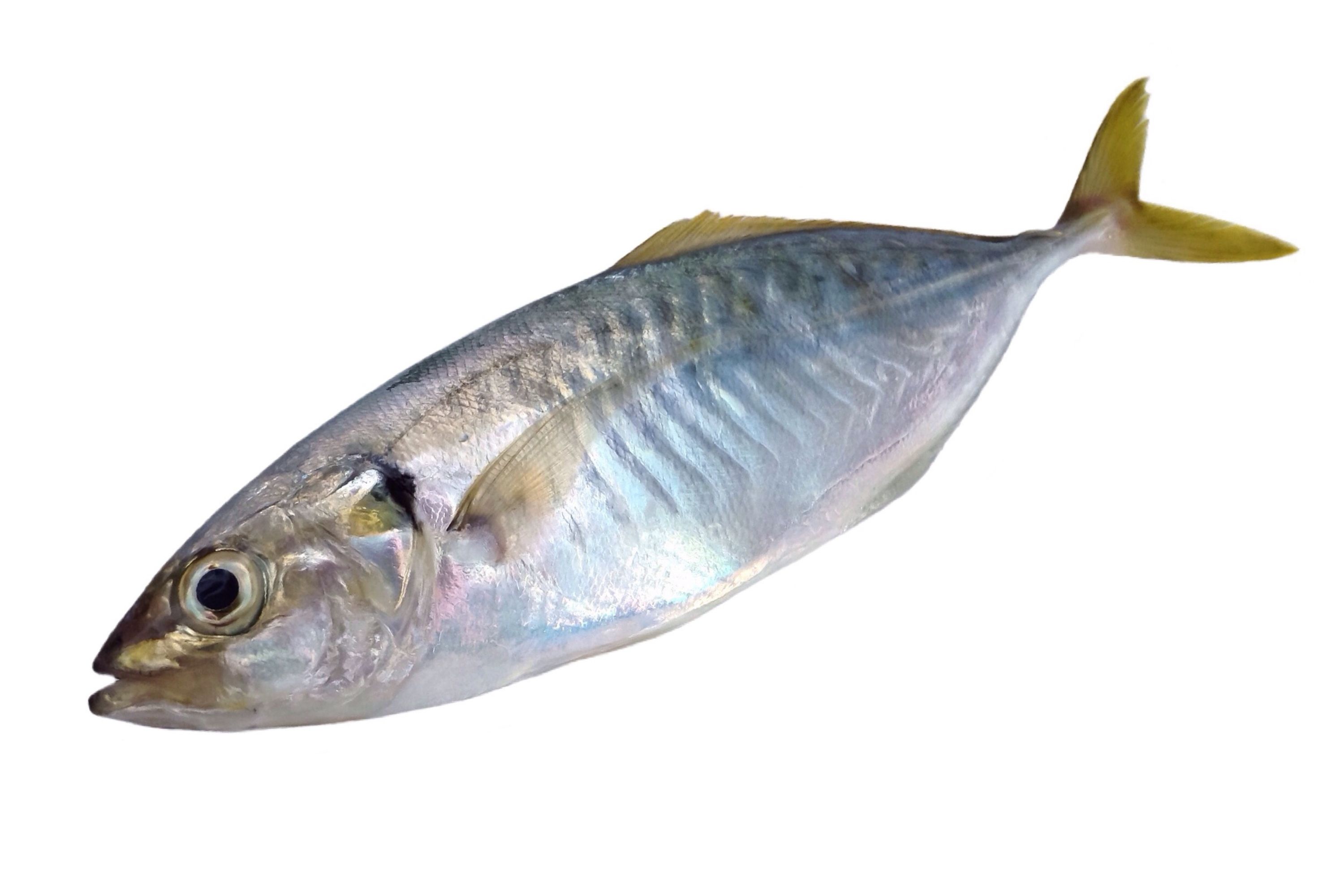Bar jack fish
(Caranx ruber)

Description
The bar jack (Caranx ruber), also known as the carbonero, red jack, blue-striped cavalla or passing jack, is a common species of inshore marine fish classified in the jack family, Carangidae. The bar jack is distributed through the western Atlantic Ocean from New Jersey and Bermuda in the north to Venezuela and possibly Brazil in the south, with the largest population in the Gulf of Mexico and West Indies. The bar jack is most simply distinguished from similar jacks by its dark horizontal bar which runs along the back and down the caudal fin, often accompanied by an electric blue stripe immediately below it. Other more detailed differences include dentition and soft ray counts. The bar jack is a moderately large species, growing to a recorded maximum of 65 cm and a weight of 6.8 kg. The species inhabits clear shallow waters, often over coral reefs where it lives either solitarily or in large schools, taking various fishes, crustaceans and cephalopods as prey. Studies in Cuba indicate spawning occurs between March and August, with sexual maturity reached at 26 cm. It is a relatively popular sport fish and can be caught on light tackle with a variety of lures and baits. It is considered to be a good food fish, however many recorded ciguatera cases are attributed to the species, with most cases reported on the island of St. Thomas traced to this single species. The bar jack is a moderately large species, growing to a recorded maximum length of 69 cm, and a weight of 6.8 kg, but is commonly encountered at lengths of less than 40 cm. The bar jack displays the typical body shape of most of the jacks, having an elongate, moderately deep and compressed form, with dorsal and ventral profiles of approximately equal convexity. The dorsal fin is divided into two sections, the first consisting of 8 spines while the second has 1 spine followed by 26 to 30 soft rays. The anal fin is composed of 2 anteriorly detached spines followed by 1 spine and 23 to 26 soft rays, with both the anal and soft dorsal fin lobes being slightly elongated. The pectoral fins are falcate and longer than the head, consisting of 19 to 21 soft rays. The lateral line is moderately arched anteriorly, and possesses 17 to 104 scales including 23 to 29 scutes posteriorly; also having bilateral paired caudal keels present. The chest is completely scaled, which easily distinguishes it from the similar crevalle jack, Caranx hippos.
Taxonomic tree:







